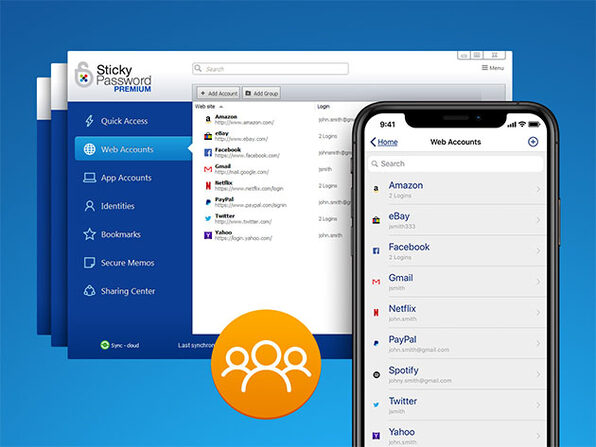

The user has the option of adding new web accounts or he can jump directly to a specific website.

The browser extension is basically just one heavily slimmed-down version of the browser app. In these it is possible to move the accounts with the help of the drag & drop function. However, it is very easy to create groups manually. For users who want to use this function more often, this may be a bit hidden. The user can find one under the item “Extras” in the menu Password generator. If the user wants to use the autofill function, he selects in a separate window which account should be used to log in. This multiple accounts are instead traded in the same entry. In contrast to other protection programs of this type, Sticky Password does not create its own entries if there are several logins for a particular website. Furthermore, the user will find a security dashboard here, in which he can keep an eye on the security of his accounts. The user can add secure notes, new accounts and much more in the “Quick Access” area. If that was the case, they had to added by hand will. Because, for example, the login names were only partially adopted in the test. The heart of the program is the desktop application: If the user imports logins from another program or a browser, they will probably first have to create a little order. The two most important components of the application are the desktop program and the extension for the browser:

Behind the apparently old-fashioned design, however, there is an extremely multi-faceted program, which is also extremely user-friendly. Because it is very reminiscent of the AOL user interface. Sticky Password's design makes one nostalgic impression - You could also say that it looks outdated compared to other password managers. The user interface and ease of use of Sticky Password


 0 kommentar(er)
0 kommentar(er)
